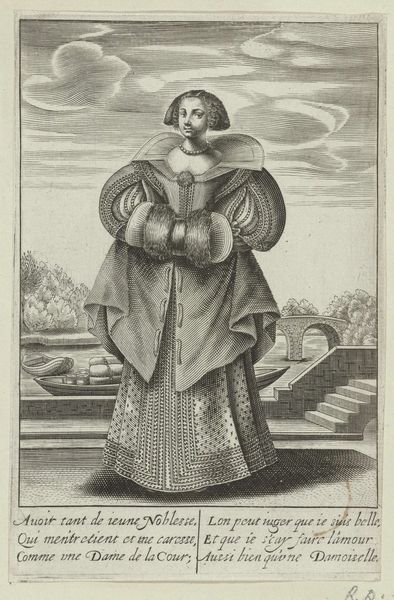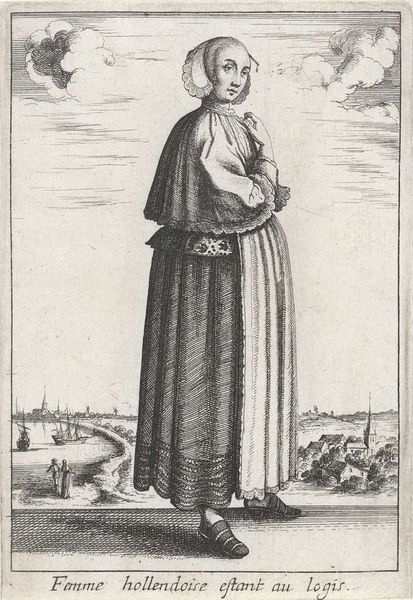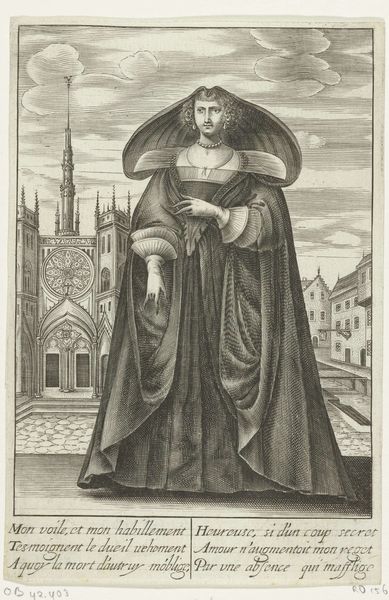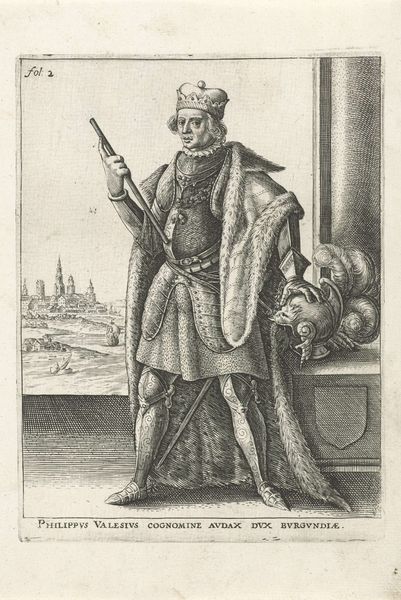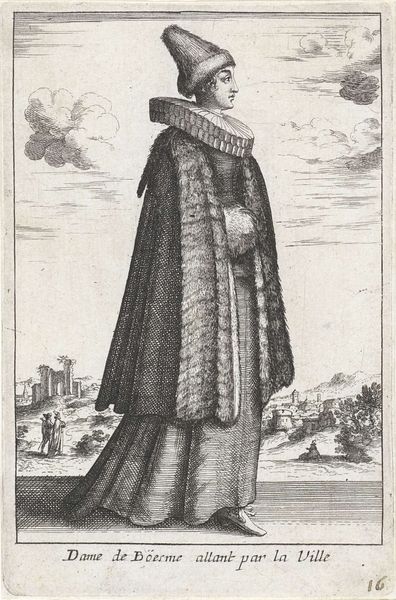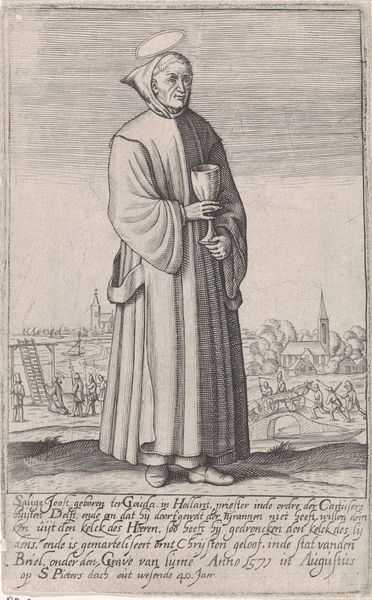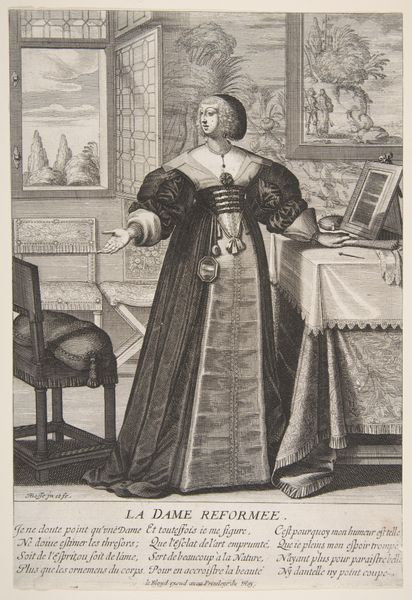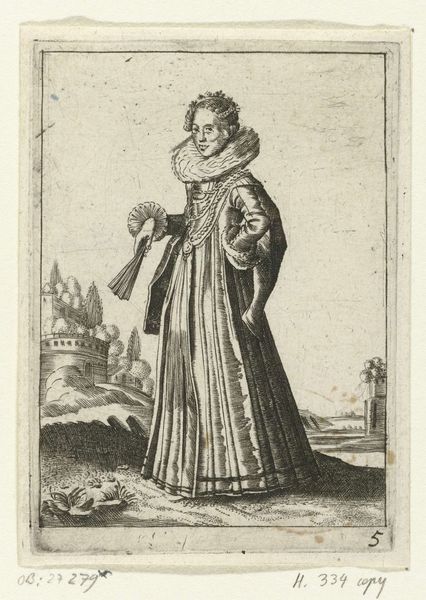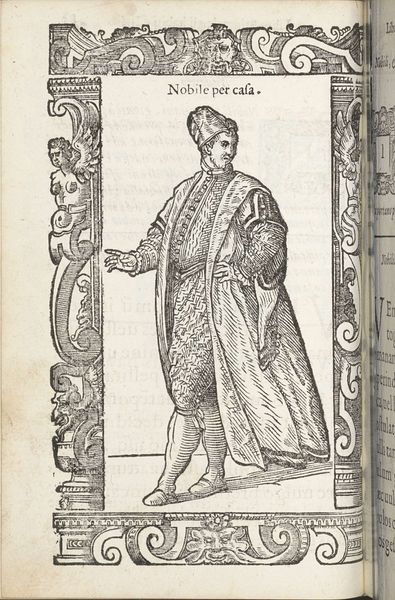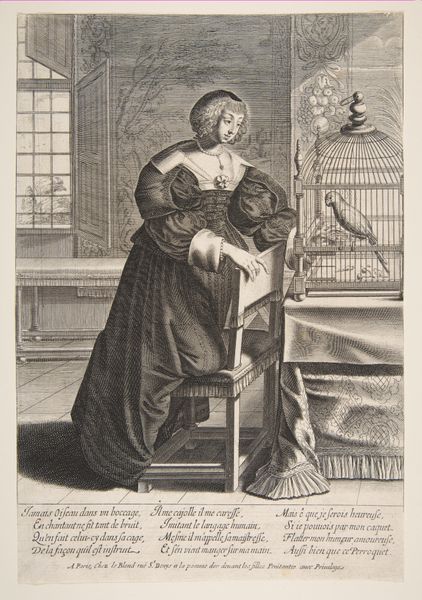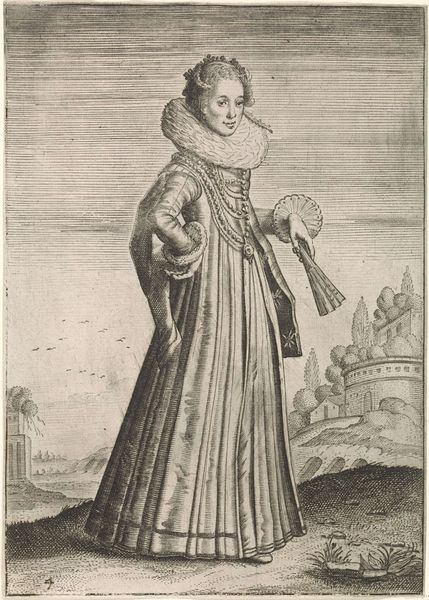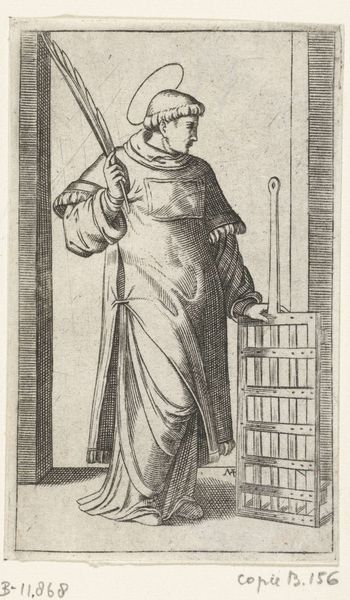
print, engraving
#
portrait
#
medieval
# print
#
old engraving style
#
landscape
#
caricature
#
portrait drawing
#
engraving
Dimensions: height 175 mm, width 120 mm
Copyright: Rijks Museum: Open Domain
Curator: Here we have Isaac Briot's engraving, "Franse dame in rouwkleding in een paleistuin," which translates to "French Lady in Mourning Clothes in a Palace Garden," dating from around 1630. It’s quite striking. What are your initial thoughts? Editor: The somber tone is instantly palpable; she is turned away from us with the suggestion of weeping within those wispy clouds above. It’s the epitome of controlled grief, contained yet immense. Curator: The black dress certainly signifies mourning attire of the period. It would be interesting to delve into the materials. We can consider who would be commissioning and consuming such images. Briot and others created a visual culture tied to displays of wealth and status even when cloaked in supposed mourning. The very act of commissioning such an elaborate print speaks to social performance. Editor: Exactly, and the details are extraordinary—her posture so correct, the pleats falling just so! It speaks of a great love perhaps, or maybe just the expected performance for a public. There's a tension between the rigid palace garden in the background and the unruly emotion seething just beneath her fashionable garments. Is it genuine heartache or a theatrical performance of bereavement? Curator: It would be interesting to look more at who printed this, and who bought it. It’s interesting that this imagery has an afterlife because people respond to that same visuality today. Looking at it now, who might feel an affinity? Editor: Maybe a young widow? An art history student pondering social constrictions and freedom? Maybe someone drawn to the melancholy aesthetic, or an artist seeking ways to capture the depths of sadness? Ultimately, there’s something timeless in observing a figure so caught in the public display of her inner grief. Curator: Yes, well put. Thank you, I think that gives a useful way into reading the work, so our listeners might connect. Editor: Anytime, seeing art through others’ eyes is half the experience.
Comments
No comments
Be the first to comment and join the conversation on the ultimate creative platform.
